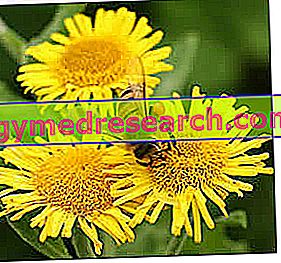Watch the video
X Watch the video on youtubeGenerality
Pollinosis is an allergic reaction that occurs on a seasonal basis in people who are hypersensitive to pollens from specific families of herbs, flowers and trees. Among the different Italian areas there are significant differences in sensitization to the various pollens: the presence of allergenic granules is influenced by the climate and the spread of vegetation in the territory.

The pollen grains are released into the atmosphere with characteristics defined for each individual plant.
Importance of Calendars
Identifying and knowing the pollen to which you are sensitized can help you better manage your allergy.
Pollen calendars provide a general idea of the concentration of certain allergenic pollens at a specific time of year and in different Italian regions, as the timing and intensity of the spread of pollen are variable factors. These calendars are processed by the National Aerobiology Centers or by the Local Health Authorities, to provide the user with real-time updated data on pollination and short-term "forecasts". The detection of the parameters is performed by means of volumetric samplers for pollen capture, which allow the quantification of pollen concentrations per cubic meters of air.
Over time, thanks to aerobiology studies, it was possible to detect:
- The progressive increase in cases of pollen allergy, especially with regard to early or pre-spring flowering trees ( Cupressaceae, Betulaceae, Corylaceae );
- The appearance of new pollen grains diffused by exotic plants, introduced on our territory for ornamental or reforestation purposes;
- The onset of additional allergic forms caused by plant pollens whose seeds were introduced in some Italian regions, as pollutants of agricultural seeds imported from other continents (eg Ambrosia).
The creation of pollen calendars allows us to identify the following seasons:
- Winter / pre-spring.
In the first months of the year the pollens of some arboreal plants appear: Betulaceae (Alder), Corylaceae (Nocciolo) and Cupressaceae . Later on, the pollen of Oleaceae (Ash) and of Salicaceae (Poplar and Willow) appear. The presence of Platano pollen is observed between March and April.
- Spring .
In addition to the pollens of numerous arboreal plants Betulaceae (Birch), Corylaceae (Carpini), Fagaceae (oak and beech), Oleaceae (Ash and Olive), Cypress, Platano and Pino, pollen from herbaceous plants such as Urticaceae and Graminaceae are also found . The poplar and willow pollens disappear.
- Summer season.
Characterized mainly by the presence of herbaceous plant pollens such as Urticaceae and Compositae (Ambrosia and Artemisia). The pollen of arboreal plants detected are those of Chestnut and Pine.
Example of pollen calendar
Here is an example of a calendar to be able to identify approximately the flowering period of the plant to which you are allergic. It should be remembered, however, that the flowering period is influenced by climatic factors, such as humidity, rainfall intensity, cold. As a result, it may vary by area and by year. For these reasons it is useful that the pollen allergic person consults the updated flowering calendar of his region.
| grasses | pollination period | Salicaceae | pollination period |
| Oats | from May to August | Poplar | from March to September |
| Wheat, Loglio | from May to June | Willow | from March to September |
| Maize, Sorghum | from July to September | Cupilifere | pollination period |
| Rye | from June to July | Beech tree | from March to June |
| Cannarecchia | from August to September | Oak tree | from April to June |
| Weedy grass | from June to August | Corilacee | pollination period |
| Canine grass | from June to October | core | from January to March |
| Capellini, Agroside | from June to August | Hornbeam White and Black | from April to May |
| Caprinella, Mazzolina grass | from May to September | Cupressacee | pollination period |
| Cowgirl grass | from May to July | ipresso | from January to May |
| Paleo Dei Prati | from April to June | Urticaceae | pollination period |
| Paleo, Spigolina | from April to June | pellitory | from February to October |
| Paleo Odoroso | from March to July | Oleaceae | pollination period |
| Logliarello | from May to August | Ash tree | from April to June |
| Gramigna of the streets | from February to November | Privet | from April to June |
| Gramigna of Prati and Orzo | from April to August | Olivo | from March to April to June |
| Composite | pollination period | Other Plants | pollination period |
| Ambrosia | from August to September | Maple, Horse Chestnut | from April to May |
| Wild Absinthe | from August to September | Eucalyptus | from April to June |
| Absinthe, Chamomile | from June to September | Pino Domestico | from April to June |
| Dandelion | from February to November | Maritime Pine | from April to June |
| Girasole, Verga D'oro | from July to October | White Mulberry | from May to June |
| daisy | perennial | Mimosa, Robinia | from February to July |
| Betullacee | pollination period | Elm tree | from March to April |
| Birch | from January to February to May | Dwarf palm | from July to October |
| Alder | from February to April | Plantain | from April to August |
| pellitory | from February to October | Black Pine | from May to July |
| Plantanacee | pollination period | Rate | from February to May |
| plane tree | from March to May | lime | from March to June |
Using calendars
Aerobiological monitoring and processing of pollen calendars make it possible to make an important contribution, both to the doctor and to the patient, in the correct management of pollen allergy; all this for the following reasons:
- During the diagnosis of pollen allergy, it contributes to the creation of adequate diagnostic panels and facilitates the correlation with the clinical history reported by the patient (medical history) and the positive aspects highlighted by diagnostic tests.
- In clinical monitoring, it allows the evaluation of variations in clinical signs, pathophysiological and immunological parameters.
- Finally, during the pollen season, it directs to correct drug therapy and provides indications to set the immunotherapy suitable for the specific allergy.



